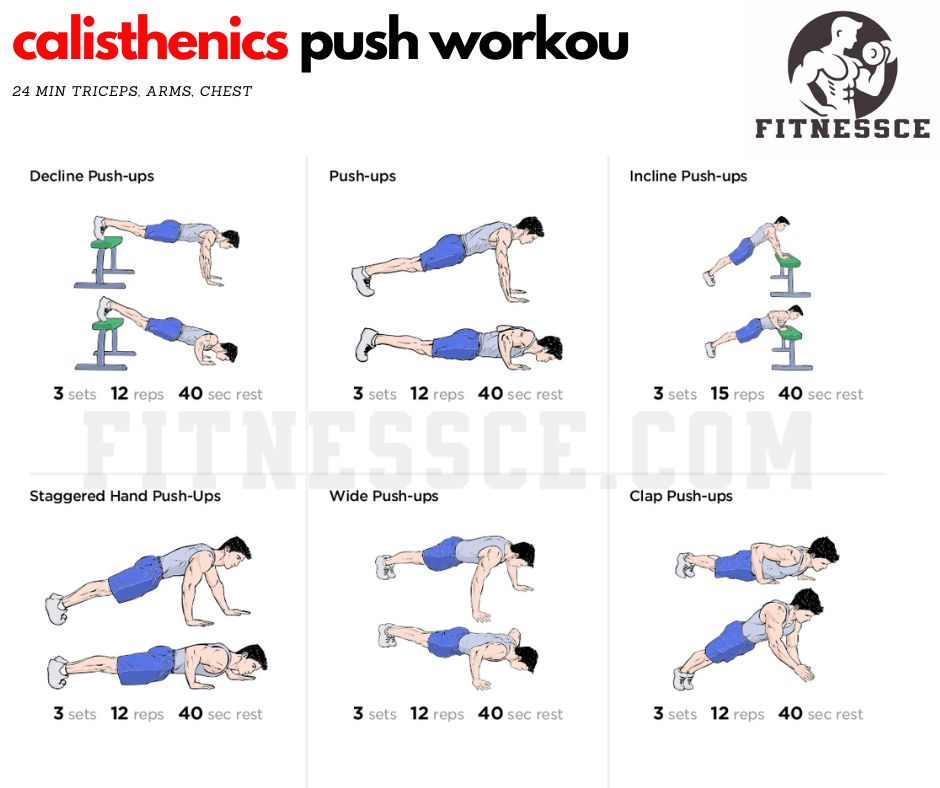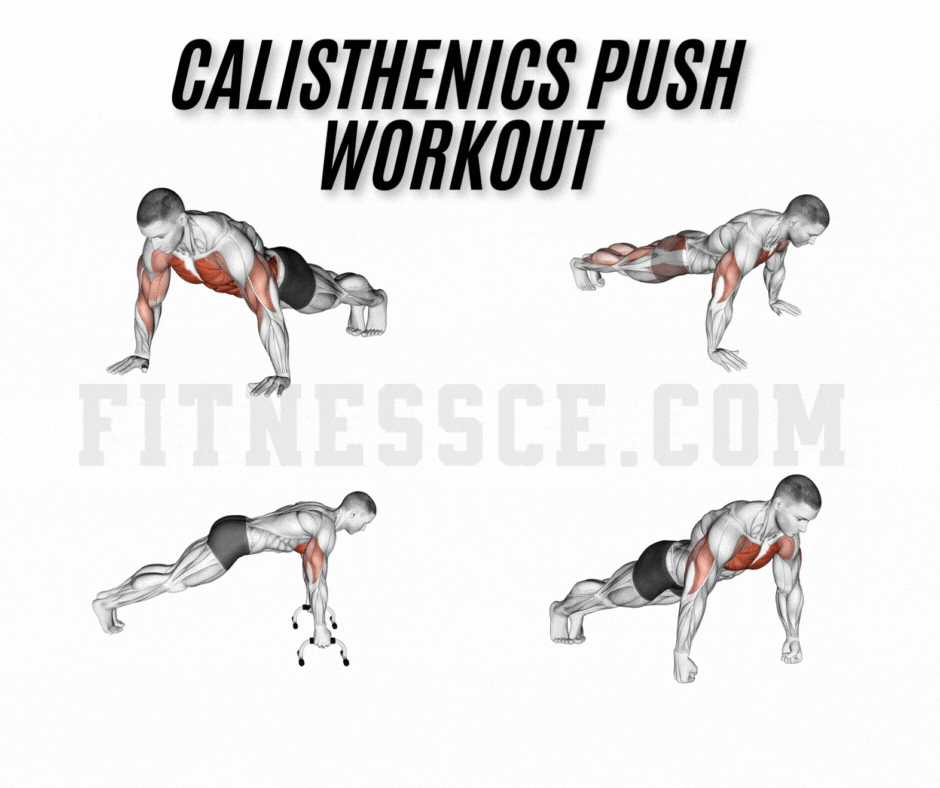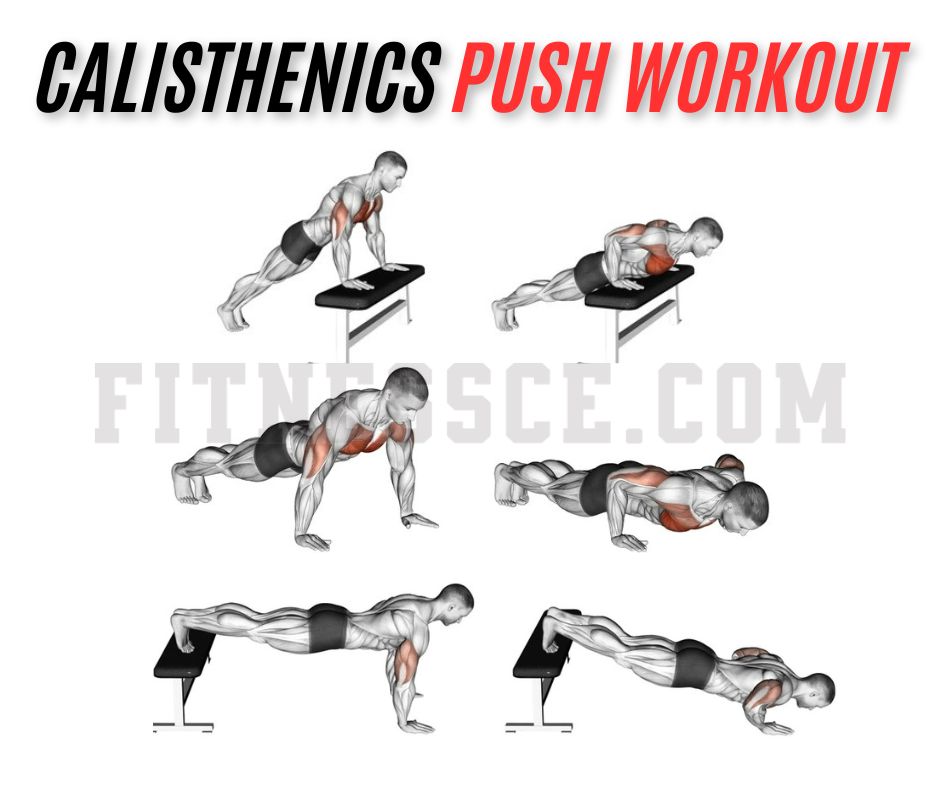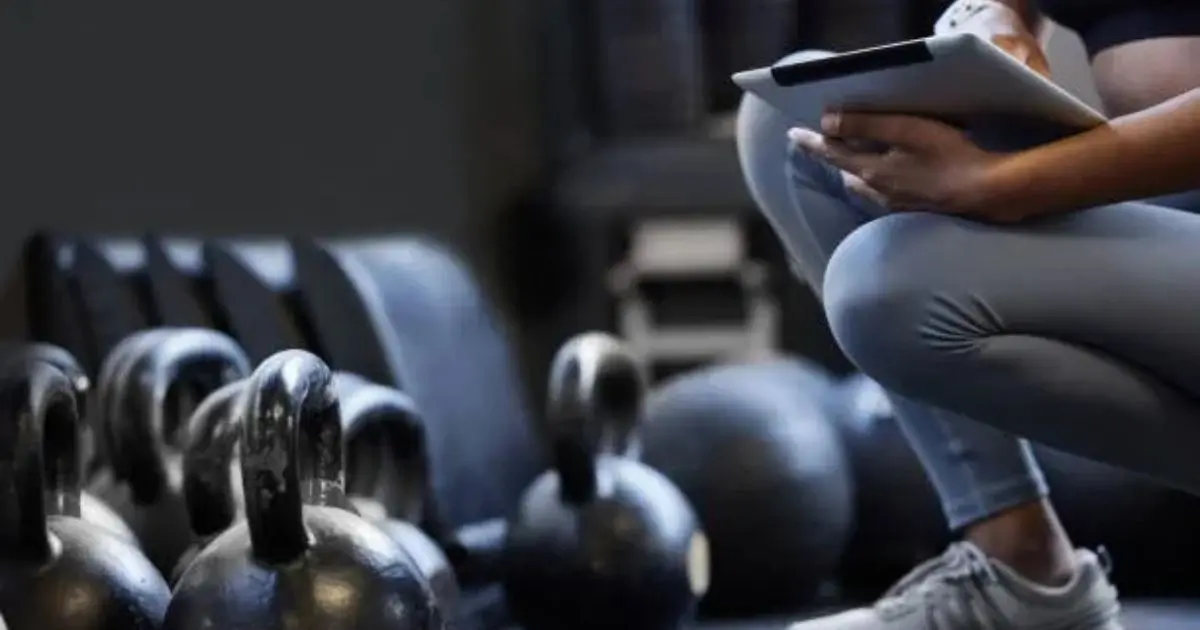For decades, Navy SEALs have been primarily training using calisthenics as a fundamental component. These best fighters know what many gym-goers are only starting to realize: without using a single piece of costly equipment, a properly designed calisthenics push workout can produce outstanding upper body strength, muscle definition, and functional fitness.
This complete book will bring you through everything you need to know about calisthenics push routines, regardless of your goals—stronger chest, better-defined shoulders, or powerful triceps. Using just your own body weight, you’ll learn how to change your upper body from basic moves to complex methods that challenge even experienced athletes.
Table of Contents
Why Calisthenics Push Workouts Deserve a Place in Your Fitness Routine
Calisthenics training is a return to one of the most basic and efficient means of strengthening, not only a trend. Here’s why bodyweight push workouts deserve your attention:
Strong Muscle and Strength Development
Against common wisdom, building muscle does not require large weights. When done with appropriate intensity and progression, high-volume bodyweight training has been shown in studies published in the Journal of Strength and Conditioning Research to generate equivalent hypertrophy—muscle growth—to traditional weight training.
Functional Exercise Applied to Real Life
Calisthenics push motions work for several muscle groups simultaneously, unlike isolated machine exercises, so enhancing coordination and building strength is directly applicable to daily activities.
Simplicity and Accessibility
Perhaps the most compelling advantage of a home calisthenics push workout is its accessibility. No gym membership, no tools, no apologies—just you and gravity cooperating to create a better body.
Joint-Friendly Strength Development
Perfect for lifetime fitness, bodyweight exercises let you build strength while reducing the joint stress sometimes linked with heavy-weight training.
Core Engagement and Integration of the Total Body
Every calisthenics push exercise doubles as a core workout, calling on your center to stabilize your body during every movement.
Muscles Targeted in Calisthenics Push Workouts

Understanding which muscles you’re working on is key to designing effective workouts. A comprehensive calisthenics push workout targets:
Primary Muscles Secondary Muscles Stabilizing Muscles
Pectoralis Major (Chest) Serratus Anterior Core Muscles (Rectus Abdominis, Obliques)
Anterior Deltoids (Front Shoulders) Rotator Cuff Muscles Lower Back
Triceps Brachii Posterior Deltoids Rhomboids
This synergistic muscle engagement is what makes bodyweight push workouts so effective for building balanced, functional strength.
From beginner to advanced, calisthenics push exercises library.
Exercises for beginners in push
1. Push-Us for Walls
• Directions: Face a wall. Place your hands at shoulder height on the wall somewhat wider than shoulder width apart. Then, push back to the beginning point after bending your elbows to bring your chest closer to the wall.
Advice: Keep your body straight from head to heels; the muscles worked are the chest, shoulders, and triceps (lower intensity). Exercise is more easy the closer your feet are to the wall.
2. Push-ups on an Incline
• Directions: Put your hands on a raised surface—a bench, a table, a strong chair. Hold your hands somewhat wider than shoulder-width apart. Drop your chest toward the surface, then push back up.
• Muscle contraction Worked: front shoulder, triceps, chest
• Advice: The workout is easier when the surface is higher. As you grow stronger, choose ever smaller surfaces.
3. Push-Ups from the Knee
• Directions: Start in a modified push-up stance with the ground under your knees. Your hands should be somewhat more than shoulder-width apart. Lower your chest toward the floor, then reverse direction.
• Worked: triceps, shoulders, chest
• Advice: Keep your core engaged and straight back. Keep your hips from slinking downward or piking upward.
Push Exercises in Intermediation
1. Traditional Push-Ups
Start in a plank stance with hands somewhat wider than shoulders. Bending your elbows, keep them roughly at a 45-degree angle from your torso and lower your chest toward the ground. Retort to the beginning point.
• Muscles Worked: core, triceps, shoulder, chest
• Advice: Straight line from head to heels. Throughout the action, brace your core and squeeze your glues.
2. Push-Ups from Diamond
• Directions: Touching your thumbs and index fingers together forms a diamond shape with your hands. Point this diamond exactly under your chest. Keep your elbows near your body, and do push-ups.
• Muscles Worked: Mostly triceps; chest and shoulder secondary
To enhance triceps involvement, keep your elbows tucked in tight to your sides.
3. Drop Push-Ups
• Directions: Hands on the ground at shoulder width while feet on an elevated surface—bench, chair, or step. Push-ups in this posture
• Muscles Worked: front deltoids, upper chest, triceps
• Advice: The workout gets more difficult the higher your feet. Tightening your core will help to avoid lower back arching.

Advanced Push Workshops
1. Archer Push-Us
• Guidelines: Start in a broad push-up stance. Lower, then bend one arm as you stretch the other straight out to the side. Change sides every time you repeat.
• Muscles Worked: triceps (with more unilateral loading), shoulders, chest
• Advice: To maximize the weight on the working arm, concentrate on keeping the extended arm absolutely straight.
2. Pseudo Planche Push-Us
Start in a push-up stance with hands positioned further down your waist and fingers pointing toward your feet. Slink forward, moving weight ahead over your hands. Do push-ups, keeping this forward lean.
• Worked: front shoulders, chest, biceps, core
• Advice: The planche would benefit much from this kind of preparation effort. It gets harder the more forward you tilt.
3. Progression in One-Arm Push-ups
Start with one arm positioned beneath your chest and the other arm behind your back. Stability comes from a wider foot stance. Lower yourself, then use mostly one arm to push back up.
• Muscles Worked: shoulders, triceps, chest, core (with great unilateral loading)
• Advice: If necessary, start the working hand from a higher surface. Emphasize maintaining your body steady and stopping spinning.
Strategies for both progress and regression.
Strategies for Development
In calisthenics, good growth adheres to these ideas:
1.Before switching the exercise, increase volume by adding more repetitions or sets.
2.Change body posture to increase or decrease leverage in workouts.
3.Work through a greater range of movements to improve it.
4. Create isometric holds: Stop mid-movement at the bottom or midway.
5. Affect stability: From two limbs to one limb, variants
When should one go into regression?
Knowing when to advance is only one aspect; another is knowing when to back off:
- When form suffers: Should you find it difficult to keep the correct technique
- Always rebuild gradually following an accident or long absence.
- When in pain: separate between possible harm and productive suffering.
- Should progress stop-off: Sometimes, a brief setback lets you advance more long-term.

Sample Calisthenics Push Workout Routines
Beginner Full Body Push Workout
Warm-up: 3-5 minutes of arm circles, shoulder rolls, and light jogging in place
| Exercise | Sets | Reps | Rest |
| Wall Push-ups | 3 | 10-15 | 60 sec |
| Incline Push-ups | 3 | 8-12 | 60 sec |
| Knee Push-ups | 2 | 8-10 | 60 sec |
| Plank Hold | 3 | 20-30 sec | 45 sec |
Cool-down: Chest and triceps stretches, 30 seconds each
Intermediate Muscle Growth Push Workout
Warm-up: 5 minutes, including arm circles, shoulder taps, and 10 incline push-ups
| Exercise | Sets | Reps | Rest |
| Standard Push-ups | 4 | 12-15 | 60 sec |
| Diamond Push-ups | 3 | 8-12 | 75 sec |
| Decline Push-ups | 3 | 10-12 | 75 sec |
| Push-up Hold (at bottom position) | 3 | 15-20 sec | 45 sec |
Cool-down: Thoracic spine mobility exercises and chest stretches
Advanced Strength Push Workout
Warm-up: Dynamic movement prep including 5 minutes of light cardio, scapular push-ups, and band pull-parts
| Exercise | Sets | Reps | Rest |
| Archer Push-ups | 4 | 6-8 each side | 90 sec |
| Pseudo Planche Push-ups | 4 | 8-10 | 90 sec |
| One-Arm Push-up Progression | 3 | 4-6 each side | 120 sec |
| Explosive Push-ups | 3 | 8-10 | 90 sec |
Cool-down: Comprehensive stretching routine for chest, shoulders, and triceps
Common Mistakes and Injury Prevention
Form Mistakes to Avoid
Keeping elbows at a 45-degree angle will help to guard shoulders.
2. Sagging hips: Head to heels, keep a straight line.
3. Incomplete range of motion: Lower till your chest almost rests on the ground.
4. Holding breath: During exertion—that is, pushing—breath out.
5. Keep wrists aligned precisely under the shoulders.
Preventive Strategies for Injury
Warm up completely; never miss your warm-up.
• Advance progressively. Accurate performance will help you earn every advancement; pay attention to your body: Tell the difference between pain and productive discomfort; rest enough: Let 48 hours pass between demanding push exercises.
• Use pull exercises to balance: With supplementary pulling exercises, prevent muscular imbalances.
Eat for Recovery for Best Results
While a detailed nutrition plan is beyond the scope of this article, here are key principles to support your home calisthenics push workout routine:
Aim for 1.6–2.0g per kg of body weight daily; drink at least 3–4 liters of water daily; focus on anti-inflammatory foods, including berries, fatty salmon, and leafy greens in recovery meals.
Eat readily digestible carbs and protein 1-2 hours before exercise; sleep quality should be given top priority for best recovery.
Modern Calisthenics: Advanced Push Skills
These advanced talents are the height of bodyweight push strength once you have perfected the exercises above:
One-Arm Push-Up; Handstand Push-Up; Planche: Holding your body parallel to the ground supported just by your hands; Tiger Bend Push-Up: An advanced variation in which you bend at the elbows and shoulders to lower your chest to the ground
Common Inquiries
Q: How often should I do calisthenics push workouts?
For novices, two to three times a week with a minimum of 48 hours between sessions. With appropriate training, more skilled athletes might exercise push actions up to four times weekly.
Can bodyweight exercises help me develop major muscles?
A: Perfect. Calisthenics may create amazing upper body muscle by progressively overloading through more challenging versions and higher volume.
Q: What if I can’t yet perform a single normal push-up?
Start with wall push-ups; next, advance to incline push-ups on progressively smaller surfaces; then, knee push-ups; last, conventional push-ups.
Q: When should I go on to more challenging variations?
You’re ready to try a more difficult variation when you can complete three sets of twelve to fifteen repetitions with proper form.
Could calisthenics totally replace weight training?
A: Advanced calisthenics can definitely produce outcomes similar to those for growth of the upper body compared to weight training. Some weighted exercises could finally become essential for ongoing development, depending on the lower body.
Ultimately, your Calisthenics Journey Starts Right Now
A well-structured calisthenics push workout routine can transform your upper body, building functional strength and impressive muscle definition without requiring expensive equipment or gym memberships. Understanding the appropriate progressions, emphasizing form, and regularly pushing yourself will help you realize that your body is the sole instrument you need to develop amazing strength.
Start with the exercise that fits your present degree of competence, concentrate on perfecting every movement pattern, and then go to increasingly difficult versions. Consistency beats intensity; regular practice with correct form will produce far better outcomes than sporadic all-out efforts.
All set to discover what your body really is capable of? Drop down and offer me twenty; your calisthenics trip begins here.
Are more calisthenics exercises and progression advice desired? To get weekly workout ideas, technique instructions, and special training advice, right to your email, register for our newsletter.



















2 thoughts on “The Ultimate Guide to Calisthenics Push Workouts: Build Strength Anywhere”
Comments are closed.